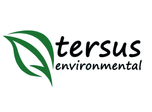Enhanced Bioremediation
Articles & Whitepapers
-
ZA-FS-SG-0915C: Small Scale Flask Demonstration of the Treatment of Sewage Waste at Waste Water Plant - Case Study
Background Sewage waste water contains high concentrations of COD (chemical oxygen demand) and other harmful waste components that have a detrimental effect to the environment. Sewage treatment facilities often face challenges with the safe and efficient removal of these waste substances. Another problem that sewage treatment plants encounter is the sedimentation efficiency of the sludge once it ...
-
In Situ Soil Remediation: An Essential Tool For Environmental Restoration
Introduction To In Situ Soil Remediation In situ soil remediation is a critical method used to address soil contamination, playing a pivotal role in environmental restoration. This technique treats ...
News
-
Florida DEP Approves NutriBind™ as part of its Innovative Technologies Acceptance Program
Tersus recieves approval from the Florida Department of Environmental Protection (FDEP), accepting the use of NutriBind™ as an innovative technology in the treatment of contaminated soil and groundwater. While the Florida DEP does not provide ...
1,4-Dioxane Bioremediation in Groundwater Update
EOS to Attend Battelle: Tenth International Conference on Remediation of Chlorinated and Recalcitrant Compounds in Palm Springs, California
Self-Nano Emulsion; Advanced Electron Donor Delivery for Enhanced Anaerobic Bioremediation
Bioremediation Provect-OX Patent Announced
Equipment & Solutions
-
Showcase
Bioremediation Mixture
LFS-1 is a mixture of microorganisms suspended in an aqueous solution used in bioremediation. Bioremediation is the cleansing of soils and waters that have been contaminated by hydrocarbon spills and the residues associated with its production. LFS-1™ is formulated with a group of 10 bacteria of the genus Pseudomonas and highly specialized actinobacteria, which are specifically created to ...











